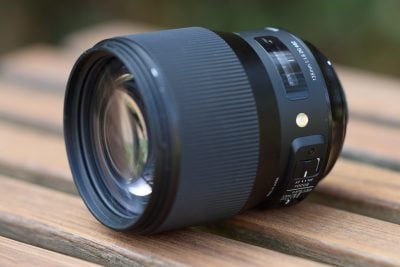Sigma 135mm f1.8 Art review
-
-
Written by Thomas
Quality
Testing: Longitudinal Chromatic Aberration and focus shift
Lenses with focal ratios of f2.8 or larger are often prone to longitudinal color aberrations (loCA, a.k.a. “axial color” or “bokeh CA”). These show up as magenta coloration in the foreground and greenish hues in the background and are not easily corrected in post-processing. The Sigma shows very little loCA at f1.8. The effect is practically gone at f2.8. The test also revealed that there is no focus shift to speak of at normal distances and also when shooting at closer distances.
Sigma 135mm f1.8 Art Longitudinal Chromatic Aberration (loCA)
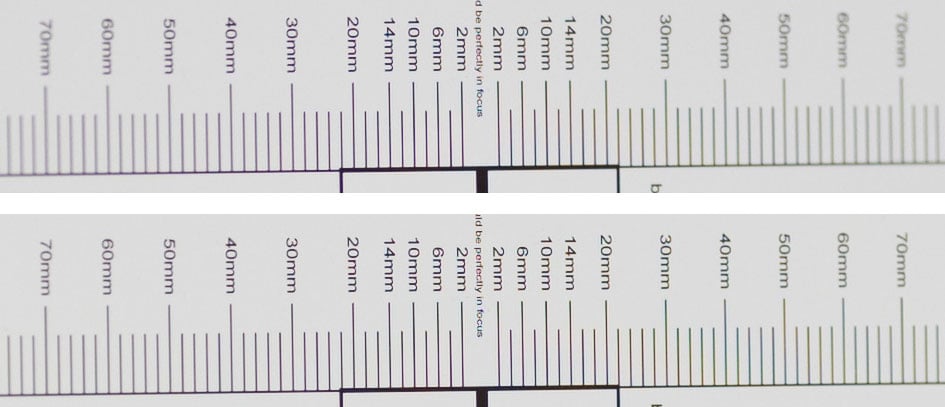
100% crop, 135mm, f1.8 (top) and f2.8 (bottom), left = foreground, right = background
The Samyang 135/2.0 ED UMC is better behaved:
Samyang 135mm f2.0 ED UMC Longitudinal Chromatic Aberration (loCA)
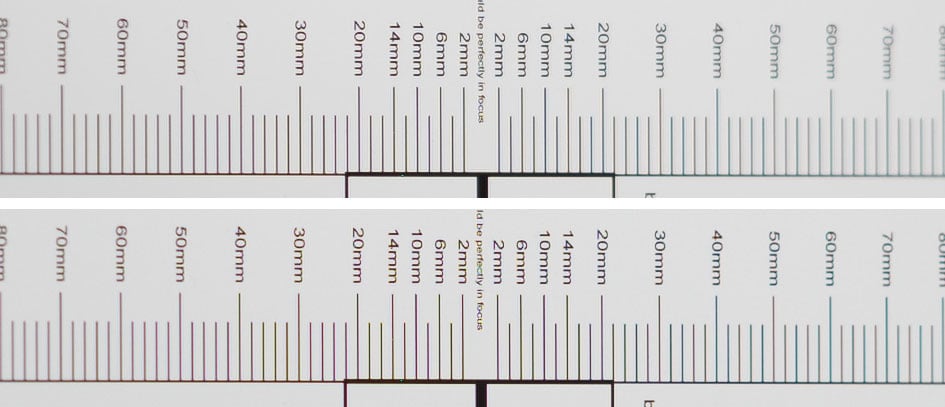
100% crop, 135mm, f2.0 (top) and f2.8 (bottom), left = foreground, right = background
The Nikon 105/1.4E shows stronger longitudinal CAs than the new Sigma:
Nikon 105mm f1.4E Longitudinal Chromatic Aberration (loCA)
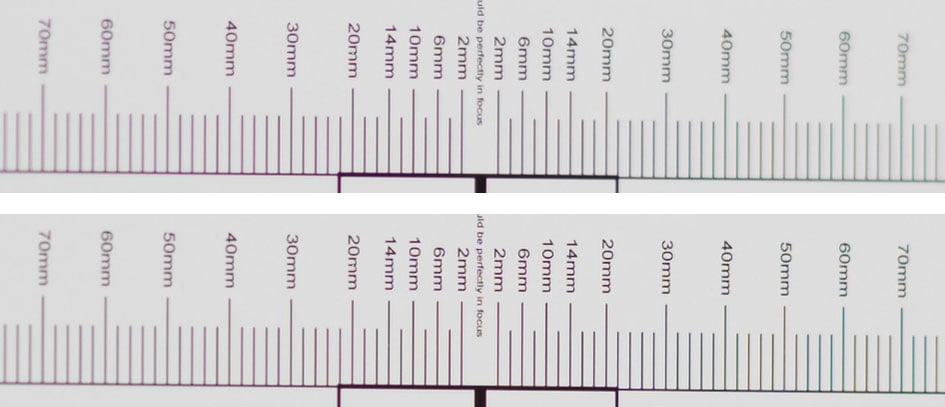
100% crop, 105mm, f1.8 (top) and f2.8 (bottom), left = foreground, right = background
Sharpness and contrast
Let’s have a look at the theoretical performance of the new Sigma first and compare it to the performance of the Nikon 105mm f1.4E:
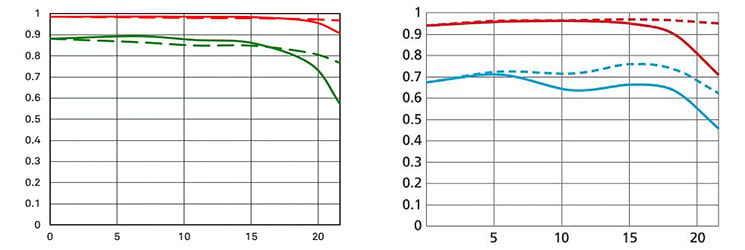
Above: MTF Sigma 135/1.8 Art at f1.8 (left); Nikon 105/1.4E at f1.4 (right)
These charts show the lens-performance of both lenses at their largest aperture which is f1.8 for the Sigma 135/1.8 Art and f1.4 for the Nikon 105/1.4E ED so it’s not really a fair apples-to-apples comparison. To read these charts you need to know that higher values are better and the closer the line-pairs are together the less astigmatism (= resolution depends on the orientation of the test-pattern) the lens has. The x-axis displays the distance from the optical axis (=center of the sensor) in mm. I’ll show you the real-life performance at 4 mm (center), 13 mm (APS-C/DX-corner), and 20 mm (FF/FX-corner) on a 36MP Nikon D810 body.
From the charts, overall contrast from the new Sigma should be very high indeed even at f1.8. It’s higher than from the Nikon at f1.4 across the full-frame sensor. The green/blue 30 pl/mm line(s) also indicates a very good resolution of the new Sigma at f1.8 with only little loss in last millimeters of the FF-corner. The Nikon is also quite well behaved right into the corners of a full-frame sensor although not at the same level of resolution. But when comparing both lenses don’t forget the Nikon is at f1.4. Overall this looks extremely good for Sigma’s new lens. Let’s see how this theoretical performance translates into real life results in the sharpness test based on Siemens-stars.
What follows are near-center results (first column) followed by APS-C/DX-corner results and FF/FX-corner results on a D810. Processing was done in Lightroom 6.9 from RAW at Camera Standard settings. Noise-reduction is set to 0, sharpening to 35/0.5/36/10, with no extra tone, color, or saturation adjustment. White-balance was adjusted to a neutral white and I did some exposure compensation to make the brightness of all crops match. So you will not see light fall-off in the corners. Removal of lateral color aberrations is ON, longitudinal CA are not corrected.
The following are all 100% crops!
Sigma 135/1.8 Art shot with Nikon D810; 100% crop from center, APS-C/DX-corner, FF/FX-corner

Above: 135mm, f1.8

Above: 135mm, f2.0

Above: 135mm, f2.8

Above: 135mm, f4.0

Above: 135mm, f5.6

Above: 135mm, f8.0

Above: 135mm, f11

Above: 135mm, f16
These 100% crops directly from a 36MP D810 sensor shows a very good performance of this lens right from f1.8 with only a little softening towards the corners of a full-frame sensor. All crops for an aperture were taken from the same shot as there is no discernible field curvature at this distance. The effect of diffraction can be seen even at f8.
The following comparison is at f2.0 and shows the Sigma 135/1.8 Art (1st row), the Nikon 105/1.4E ED (2nd row), and the Samyang 135/2.0 ED UMC (last row):

Above: Sigma 135/1.8 Art at 135mm, f2.0

Above: Samyang 135/2.0 ED UMC at 135mm, f2.0

Above: Nikon 105/1.4E ED at 105mm, f2.0
The new Sigma is clearly the sharpest in the center with the Nikon very close albeit with some coloration from loCA. The Samyang is just that bit softer in the center. In the APS-C/DX-corner all three lenses look very similar. And at the FF/FX-corner the Samyang is the best trailed by the new Sigma and the Nikon which is just a bit soft.
Performance at long distances
This is a series of test-shots of a cityscape where you can measure distances in km, not meter. I use this scene to show you how the lenses perform when almost everything is at infinity. I set White Balance to a standard daylight value to make them comparable across lenses shot at the same day and also try to make exposure comparable. There’s no tinkering with vignette-control so you see it here as it is produced by the lens. Focus was manually acquired at the largest aperture in live-view and not changed for other apertures.
You can click on the main image or the crops to access the respective large original or you use the links beneath the main image. Please respect our copyright and only use those images for personal use.
The main image shows the complete scene at maximum aperture to give you an impression of the angle of view and to judge vignetting. This is followed by one row of 100% crops from f1.8 to f11 each from the middle, the APS-C/DX-corner and the FF/FX-corner.
Sigma 135/1.8 Art shot with Nikon D810
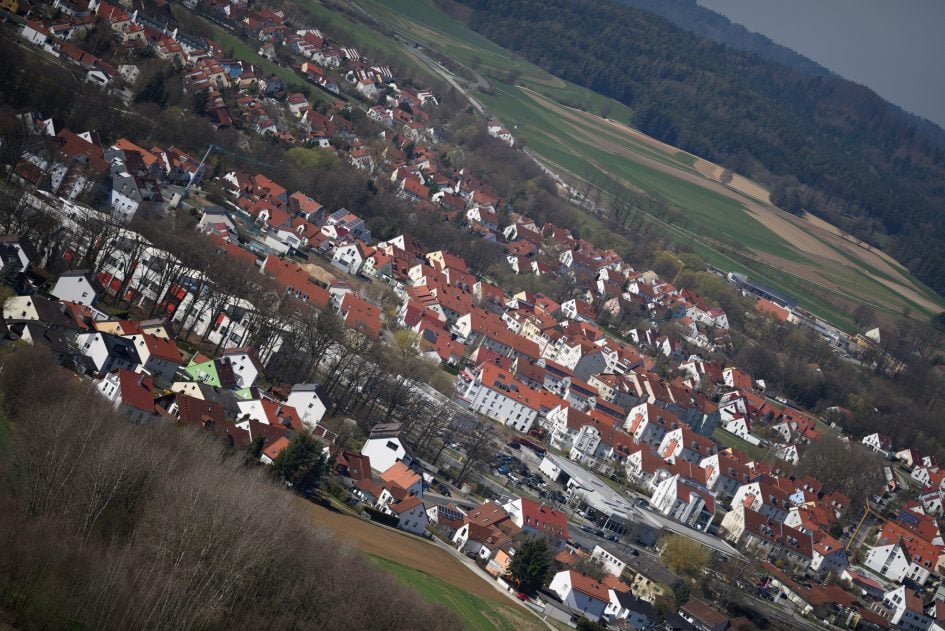
Above: 135mm, f1.8; also available at f2.0, f2.8, f4.0, f5.6, f8.0, f11, f16

Above: 135mm, f1.8

Above: 135mm, f2.0

Above: 135mm, f2.8

Above: 135mm, f4.0

Above: 135mm, f5.6

Above: 135mm, f8.0

Above: 135mm, f11
In this long distance test the new Sigma again shows its merit: its performance is very good even wide open across the sensor. And the amount of vignetting seems pretty moderate for an f1.8 lens. Stop down to f2.8 to get very little light fall-off.
I shot the same scene within minutes with the Samyang 135/2.0 and the Nikon 105/1.4E for comparison at f2.0:

Above: Sigma 135/1.8 Art at f2.0

Above: Samyang 135/2.0 ED UMC at f2.0

Above: Nikon 105/1.4E ED at f2.0
Bearing the lower magnification of the Nikon in mind I’d say that all three lenses look pretty similar in this shot. If you look closely the Samyang is the softest in the center and the Nikon the softest inn the FF/FX-corner. Btw.: all three images were developed to the same identical white-balance. The color rendering seems the coolest with the Sigma and the Samyang has a slight yellow cast.
Vignetting
To make it easier to compare light fall-off in the corners of a full-frame sensor I’ve arranged a series of three shots each with the new Sigma (1st row), the Samyang 135/2.0 (2nd row) and the Nikon 105/1.4E (3rd row) at different apertures. All images were developed to the same brightness in the center. From left to right: f1.8, f2.0, and f2.8:
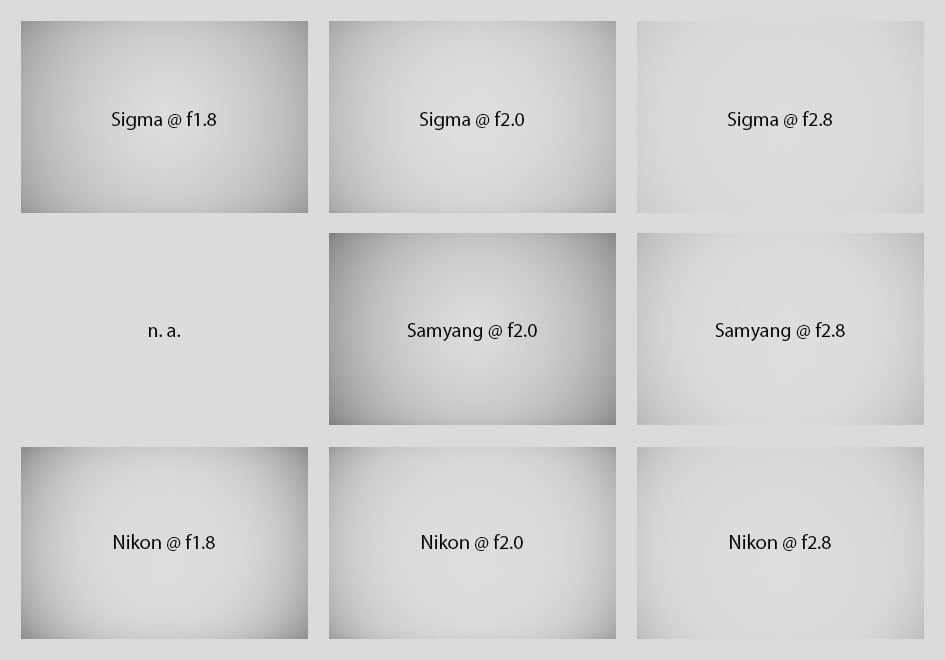
As you can see, the differences under controlled conditions are pretty visible: The new Sigma comes out at the top with very little vignetting which is almost gone at f2.8. The Nikon shows only a bit more vignetting than the Sigma and the Samyang clearly is the worst of the three lenses.
Rendering of point-light sources at night-shots
Night-shots pose a different challenge for lenses as the contrast is even higher than under bright sun and point-light sources can reveal some weaknesses such as coma, haloing and color-aberrations that do not show up as prominently in other test-shots. The 100% crops below the main image show the effect of coma in the FX-corner of the Nikon and the competition at various apertures:
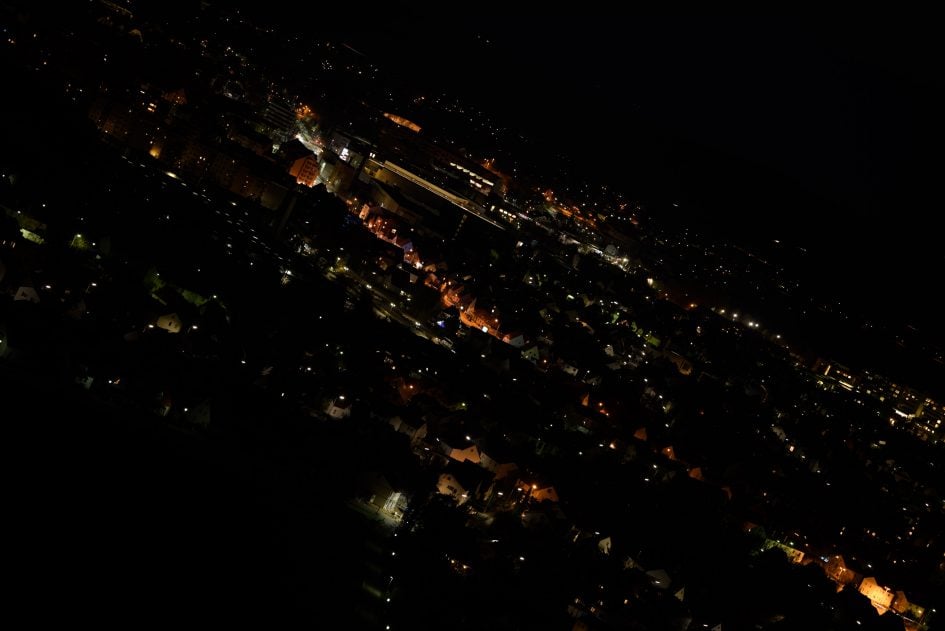
Above: Sigma 135mm f1.8 Art at f1.8; also available at f2.0, f2.8, f4.0, f5.6, f8.0

Above: Sigma 135mm f1.8 Art; FF/FX-corner at f1.8 (left), f2.8 (middle), f4.0 (right)

Above: Samyang 135mm f2.0 ED UMC; FF/FX-corner at f2.0 (left), f2.8 (middle), f4.0 (right)

Above: Nikon 105mm f1.4E; FF/FX-corner at f1.4 (left), f2.0 (middle), f2.8 (right)
The new Sigma has no coma to speak of, just like the Samyang. The Nikon shows a little coma. Both the Samyang and the Nikon were shot another day.
Rendering of out-of-focus point-light sources and Bokeh
This test is for the rendering of point-light sources in an out-of-focus background. The circle of confusion that is produced by this test is pretty indicative of Bokeh performance (in the background) and light fall-off. Ideally the out-of-focus image of the point-light is evenly lit and perfectly circular, with no “onion-rings”, and without coloration. Large aperture lenses normally produce an effect known as “cat’s eye” the further away from the optical axis the point-light is projected. This is due to optical vignetting in the lens barrel when light enters the lens from an angle.
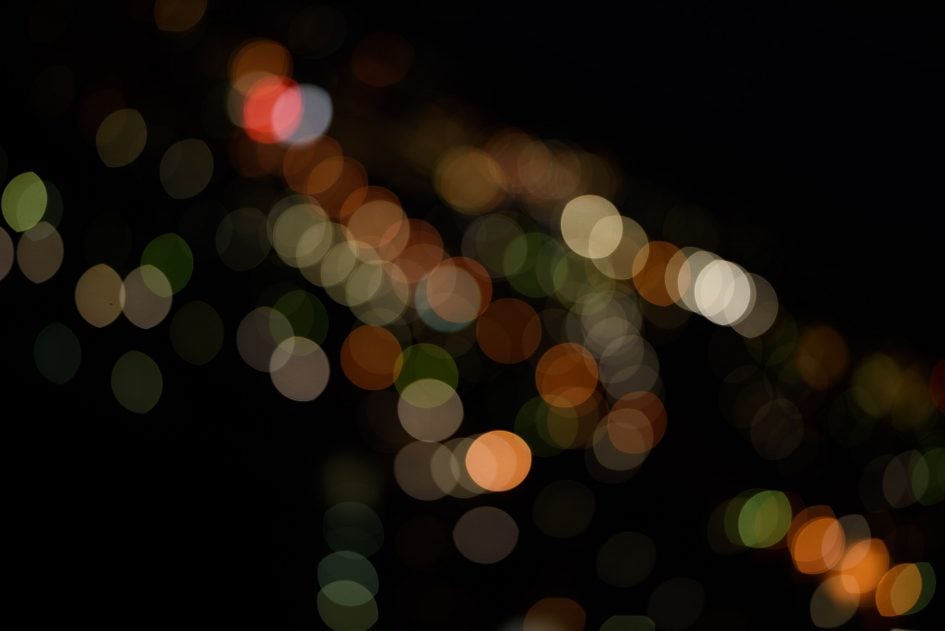
Above: Sigma 135/1.8 Art at f1.8; also available at f2.0, f2.8, f4.0, f5.6, 8.0, f11

Above: Sigma 135/1.8 Art at f1.8; 50% crops from center, DX-corner, FX-corner
As the 50% crops above show: The Sigma 135/1.8 Art produces very big Bokeh balls when used wide open. It exhibits no onion rings and the light-distribution across the circle is very even. Outlining is low in the center but increases towards the FF/FX-corner. It shows no green coloration from loCA. There’s a moderate cat’s eye effect some slight clipping from the mirror-box at the bottom of the image. Let’s see how the competition compares:

Above: Samyang 135/2.0 ED UMC at f2.0; 50% crops from center, APS-C/DX-corner, FF/FX-corner; also available at f2.8, f4.0, f5.6, f8.0

Above: Nikon 105/1.4E ED at f1.4; 50% crops from center, APS-C/DX-corner, FF/FX-corner; at f2.0, f2.8, f4.0, f5.6, 8.0
The entrance pupil of the new Sigma 135/1.8 Art is as large as from the Nikon 105/1.4E (75mm) and thus both lenses produce the biggest Bokeh balls in the center here. 2nd place goes to the Samyang. Towards the corners of the sensor the Nikon develops the strongest cat’s eye effect, while the others are pretty similar. The Samyang (at f´2.0) has similarly little clipping as the new Sigma (at f1.8) while the Nikon 105/1.4E shows it pretty prominently at f1.4. All three lenses are free of clipping artifacts at f2.8. Regarding loCA: while the Samyang and the and the new Sigma shows no green outlining while the Nikon has a little of it.
Now let’s see how this analysis of out-of-focus point-light sources translates into Bokeh-performance shooting a bookshelf:
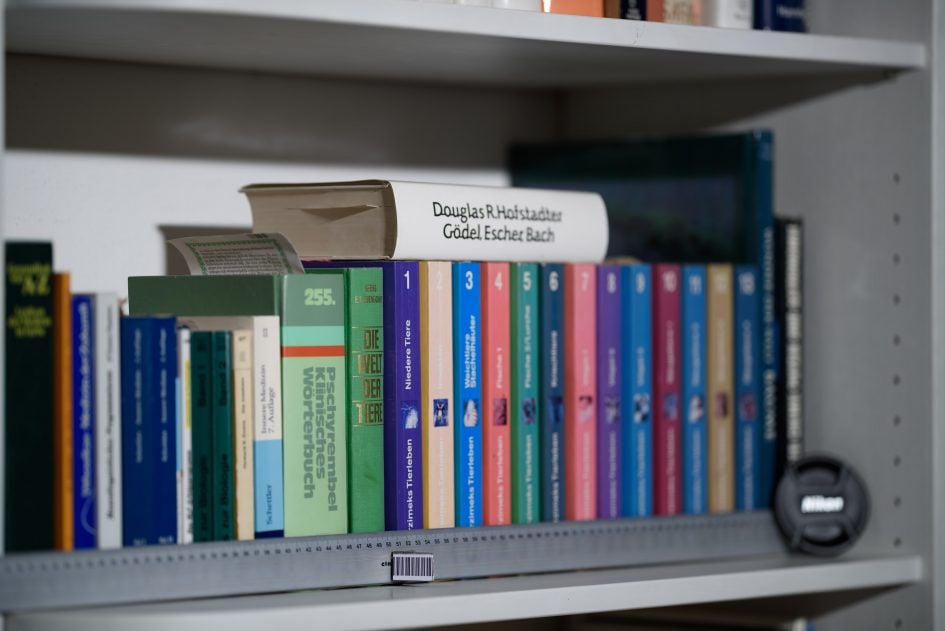
Above: Sigma 135/1.8 Art at f1.8; also available at f2.0, f2.8, f4.0, f5.6, f8.0

Above: Sigma 135/1.8 Art at f1.8; 50% crops from foreground, middle-ground, background

Above: Samyang 135/2.0 ED UMC at f2.0; 50% crops from foreground, middle-ground, background; also available at f2.8, f4.0, f5.6, f8.0

Above: Nikon 105/1.4E ED at f1.4; 50% crops from foreground, middle-ground, background; ; also available at f2.0, f2.8, f4.0, f5.6, f8.0
In the foreground the Nikon 105/1.4E and the Samyang lose due to their nervous rendering, but the new Sigma is not much better. In the middle-ground both the new Sigma and the Samyang display almost no color artifacts from loCA which is preferable over the slightly greenish production of the Nikon 105/1.4E. But the Sigma renders the transition zone a bit nervous. In the background all three lenses show a very satisfying creamy Bokeh and it’s hard to favor one over the other. All-in-all the Sigma, Samyang, and Nikon produce very good Bokeh with a slight advantage for the Samyang.
To see how this looks when shooting portraits head over to the Samples section.
Flare/ghosting
A strong light-source shining directly into the lens could produce strange colorful ghosts-images or reduce contrast considerably through flare and glare. The appearance of flare and ghosting depends on factors like the aperture and the angle of the light hitting the lens. So to judge the proclivity of the Sigma for these artifacts I went through a series of well calculated shots against a strong light source to provoke flare, glare, and ghosting.
The lens produces quite some glare at f1.8 but flare and ghosting became more obvious when stopped down to f8. Below you can see some of the more spectacular effects with the light inside the image circle (see left image below) and some surprising glare, with the light is just outside the image circle (right image below).
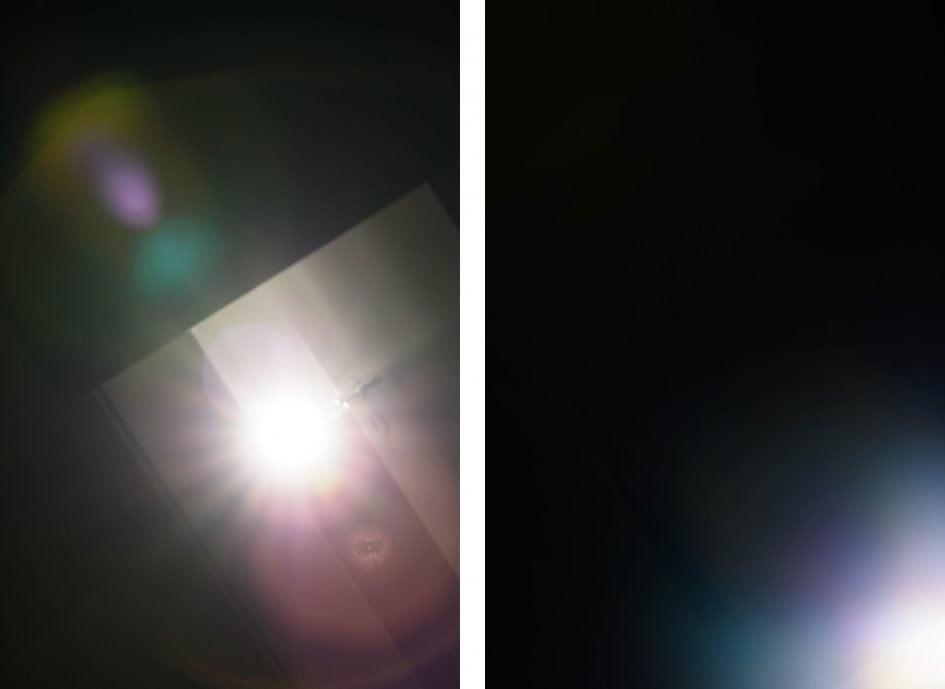
Above: Flare and ghosting. Strong light hitting the Sigma 135/1.8 Art at f8.0
When the light was further outside the frame (but still shining into the lens) there was almost no flare or ghosting. In comparison to the Sigma 85/1.4 Art the new lens seems a bit more prone to flare, glare, and ghosting.
Check prices at Amazon, B&H, Adorama, eBay or Wex. Alternatively get yourself a copy of my In Camera book, an official Cameralabs T-shirt or mug, or treat me to a coffee! Thanks!



